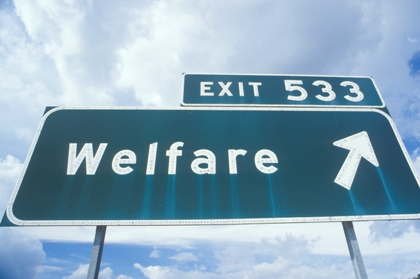Welfare Reform: British Style: "
According to British Chancellor of the Exchequer George Osborne, the United Kingdom will put into place “a radical new welfare state where it always pays to work.” Newly elected British Prime Minister David Cameron has set forth plans that, according to analysts, will result in the nation’s most dramatic welfare reform since World War II.
Wracked with debt, the U.K. is attempting to whittle down their government’s largest expense—welfare—which today stands at approximately $350 billion, or 15 percent of the nation’s GDP. Currently, 5 million British citizens receive welfare, and approximately1.4 million of those have been on welfare for over nine years.
While reining in government spending is certainly a major impetus behind the reform, it’s not the only reason. Similar to the United States’ 1996 reforms, Britain is attempting to promote the philosophy that, as Deputy Prime Minister Nick Clegg put it, welfare should “not … compensate the poor for their predicament” but instead “act as an engine of mobility.” Britain’s reforms consist of several elements:
- Consolidating dozens of welfare payments into a single tax credit,
- Capping the amount (roughly $40,000) a family can receive in welfare benefits each year,
- Promoting work by gradually phasing out welfare benefits,
- Cutting off benefits to recipients who turn down three job offers, and
- Cutting back on other tax credits available to all citizens regardless of income.
Announcements of the reforms, along with the recent introduction of other government spending cuts, have incited protests among certain crowds across the U.K. Yet the truth of the matter is that the nation is broke, and the only way to return to fiscal solvency is by beginning to eliminate government dependence.
Unfortunately, Britain’s situation is not unique. The 1996 U.S. welfare reforms successfully cut state welfare rolls, but those reforms have been significantly watered down over the years and most recently dealt all but a death blow by the stimulus bill. Today the U.S. spends nearly $1 trillion a year on welfare programs, despite spiraling debt. But there are steps the U.S. can take to get welfare spending under control, including implementing work requirements for able-bodied welfare recipients as a requirement to receive assistance, such as food stamps and housing aid. Another step is to cap federal welfare spending at 2008—pre-stimulus—levels. Also, marriage must be promoted, considering that 80 percent of long-term poverty occurs in single-parent households and the United States out-of-wedlock birth rate continues to climb.
Britain should be applauded for its welfare reform efforts. Policy that promotes personal responsibility is the only policy that will keep citizens free from the burdens of heavy-handed government.
"
No comments:
Post a Comment